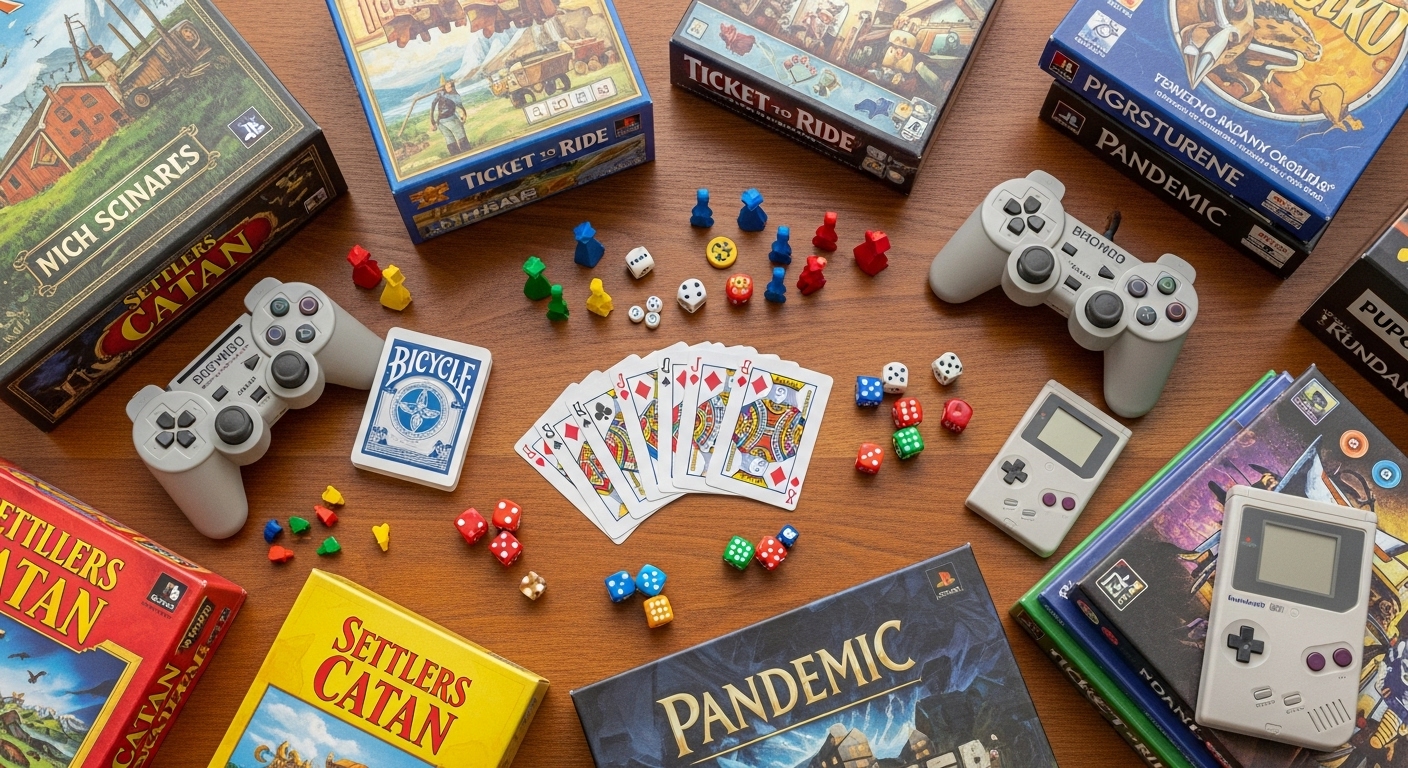When it comes to gaming, having the right monitor can make all the difference. Whether you’re competing in fast-paced shooters, exploring expansive open worlds, or enjoying the latest AAA titles, a high-quality monitor enhances every moment. But with so many options available, choosing the right one can feel overwhelming. From resolution and refresh rate to panel type and size, there are a variety of factors to consider. In this guide, we’ll break down everything you need to know to select the perfect monitor that suits your gaming needs.
1. Understand Your Gaming Needs
Before diving into the specs, it’s essential to assess what kind of games you play and what kind of gaming experience you’re looking for. Are you a competitive player who values speed and responsiveness? Or are you more into cinematic single-player games where color accuracy and immersion matter most?
For competitive gaming, where every millisecond counts, a high refresh rate and low response time are crucial. For immersive single-player experiences, screen resolution, color accuracy, and size become more important. Understanding your gaming style will help narrow down your options and ensure you get a monitor tailored to your needs.
2. Resolution: Sharpness That Fits Your Setup
Resolution refers to the number of pixels displayed on your screen and directly affects how sharp and detailed the image is. The higher the resolution, the sharper the image. Here’s a breakdown of common resolutions for gaming monitors:
- 1080p (Full HD): Ideal for casual gamers or those on a budget. 1080p is still the most common resolution, and it works well with most games, offering a good balance of quality and performance.
- 1440p (Quad HD): A step up from 1080p, this resolution offers more detail and clarity, making it perfect for gamers who want higher quality but don’t have the power to push 4K.
- 4K (Ultra HD): For gamers with powerful GPUs and a desire for the best visuals. 4K delivers incredible detail and crispness, but it requires a more robust system to maintain smooth gameplay at high settings.
If you don’t have a powerful gaming rig or GPU, opting for a 1080p or 1440p monitor might be the best choice to ensure smooth performance. For a top-tier gaming experience, especially if you’re into AAA titles or simulation games, a 4K monitor is worth considering.
3. Refresh Rate: Smoothness is Key
The refresh rate refers to how many times per second the monitor refreshes the image, and it’s typically measured in Hertz (Hz). A higher refresh rate means smoother motion, which is essential for competitive gaming, particularly in fast-paced genres like first-person shooters (FPS) or battle royales.
- 60Hz: Standard for general use, but not ideal for competitive gaming. It’s fine for casual play but can feel sluggish in high-speed action.
- 120Hz to 144Hz: The sweet spot for most gamers, providing a smooth and responsive experience without demanding too much from your system.
- 240Hz and above: Designed for professional esports players or ultra-competitive gamers. This ultra-high refresh rate ensures that every movement is buttery smooth, but it requires a high-end GPU to take full advantage of it.
For a balanced gaming experience, a 144Hz monitor should be sufficient for most gamers. However, if you’re serious about esports or competitive gaming, investing in a 240Hz or 360Hz monitor will give you a significant edge in terms of responsiveness.
4. Response Time: No Ghosting or Motion Blur
Response time measures how quickly a pixel changes from one color to another, typically from gray to gray (GtG). A low response time is crucial for fast-moving games to avoid motion blur or ghosting, where past images trail behind moving objects.
- 1ms to 3ms: Ideal for competitive gaming. A 1ms response time is considered the best, especially for FPS and multiplayer games where precision is key.
- 4ms to 5ms: Still good for most gamers, though you may notice some blur in fast-paced games, especially in darker scenes.
To ensure a crisp, smooth visual experience, look for a monitor with a response time of 3ms or lower. This will significantly reduce motion blur and improve overall gameplay clarity.
5. Panel Type: The Heart of the Display
The type of panel used in a gaming monitor affects everything from color accuracy to response time. There are three main types of panels to choose from:
- TN (Twisted Nematic): Known for its fast response times and higher refresh rates, TN panels are perfect for competitive gaming. However, they tend to have poorer color reproduction and narrower viewing angles compared to other panel types.
- IPS (In-Plane Switching): IPS panels offer better color accuracy, wider viewing angles, and superior overall picture quality. While they may not have the lightning-fast response times of TN panels, they’re great for gamers who want vivid colors and stunning visuals.
- VA (Vertical Alignment): VA panels strike a balance between TN and IPS. They offer better contrast and deeper blacks than IPS but are typically slower than TN panels. They’re great for immersive gaming experiences, particularly in darker games.
If you’re a competitive gamer, a TN panel with a low response time is a solid choice. However, for those seeking better image quality and color accuracy, an IPS panel is the go-to option. VA panels are ideal for gamers who prioritize contrast and deep blacks, especially for darker-themed games.
6. Size and Curvature: Finding the Right Fit
Monitor size plays a crucial role in your gaming setup, impacting both immersion and comfort. While size preferences vary, here are some general guidelines:
- 24 to 27 inches: A sweet spot for most gamers. These sizes provide a great balance between screen real estate and comfortable viewing distance. Ideal for 1080p and 1440p gaming.
- 32 inches and beyond: Larger monitors provide an immersive, cinematic experience, especially if you’re gaming in 4K. However, make sure you have enough space and the right viewing distance to avoid feeling overwhelmed by the screen.
Curved monitors, particularly those with a 1800R to 1000R curve, enhance immersion by wrapping the edges of the screen toward you. This can create a more natural viewing experience and reduce distortion at the edges, especially on larger monitors.
7. Connectivity: Ensuring Compatibility
When selecting a monitor, you’ll need to consider the ports and connectivity options. Make sure your monitor is compatible with your gaming system, whether it’s a PC, console, or both. Here are some common connections to look out for:
- HDMI: Common for gaming consoles like the PS5 and Xbox Series X. Make sure to check the version (HDMI 2.0 or 2.1) to ensure it supports higher resolutions and refresh rates.
- DisplayPort: A popular choice for gaming PCs, offering support for higher refresh rates and resolutions, especially on high-end monitors.
- USB-C: Some modern monitors support USB-C, which allows for easy connection to laptops or mobile devices.
For the best gaming performance, ensure your monitor has the right ports to match your system’s capabilities, especially if you’re looking to game at higher resolutions or refresh rates.
8. Price: Balancing Performance and Budget
Gaming monitors come in a wide price range, from budget-friendly models to high-end displays. While it’s tempting to go for the most expensive option, it’s important to balance performance with your budget. Consider the features that matter most to you and find a monitor that fits your needs without overspending.
For casual gamers or those on a budget, a 1080p monitor with a 60Hz to 144Hz refresh rate should suffice. For more serious gamers looking for 1440p or 4K gaming, investing in a high-quality IPS or VA panel with a high refresh rate is worth the extra cost.
Conclusion: The Right Monitor Elevates Your Gaming
Choosing the right gaming monitor involves balancing various factors like resolution, refresh rate, panel type, and size. Whether you’re an esports pro, a casual player, or someone who loves immersive single-player games, the perfect monitor is out there. By understanding your gaming needs and preferences, you can find a monitor that not only enhances your visual experience but also supports your performance. Remember, your monitor is the window into your gaming world—make sure it’s one that gives you the sharpest, smoothest, and most immersive experience possible.




